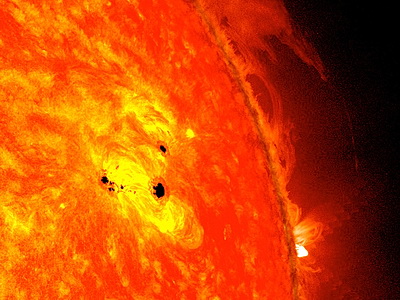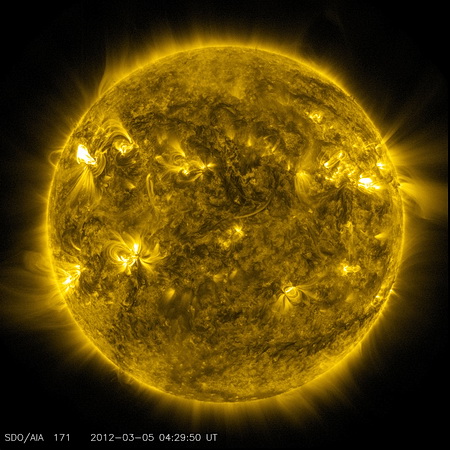
Watch out but Don’t look up! A solar flare is coming… Well almost. Solar flares are giant explosions that shoot out from the circumference of the sun, emitting radiation that is beyond human imagination. These emissions of light, heat, and energy can actually spread through the 93,000,000 miles distance from the Sun to the Earth’s atmosphere. But don’t worry. They never make it past that; however, if the flare intensity becomes too strong, there can be disturbances of radio frequency transmissions here on Earth.
Generally speaking, we humans are safe on the ground, at least for now, but in a few billion years, that may not be the case, when the Sun starts turning into a red giant and then a white dwarf.

The Energy of Solar Flares
The amount of energy released is mind-boggling. Up to 1032 ergs. That is the number 1 followed by 32 zeros. Equivalent to billions of hydrogen bombs simultaneously exploding; however, the flares emit only about 10% of the overall energy of the Sun at any one time. Another way of putting it is that these energy particles can be over a million times greater than the energy that a volcanic eruption can put out.
How Do Solar Flares Develop?
We all know what magnetic fields are and they exist in the sun also, but sometimes these fields get tangled up, like when the wires behind your computer get mixed together. Only on the sun, energy is dispersed when the entanglement gets to be just too much and a burst of fire erupts in order to dissolve this entanglement.
Solar flares can be broken down into three segments.
-
-
- Precursor stage. This is where it begins. Huge amounts of magnetic energy are generated.
- Impulsive stage. The acceleration of protons and electrons into gigantic energy distributions.
- Decay stage. The release of the energy, then the flares’ began their decomposition, which can last from about three seconds to 60 seconds.
These rapid bursts of energy reside on the sun’s outer layer, called the corona and they occur roughly every eleven years. They are difficult to see in a telescope, (of course sun filters are necessary), but with the proper instruments, they can be easily recorded.
-
Conclusion
Solar flares are one of the natural phenomena that occur in outer space, specifically among stars and our sun is no exception. We need not fear though as these energy bursts do not affect us here on earth with the possible exception of radio transmissions being interrupted. But as the sun matures, it will change to a red giant and then a white dwarf, but that won’t happen for another five billion years or so, so if you are planning a vacation or going to a game, feel free. You’ll be fine.
